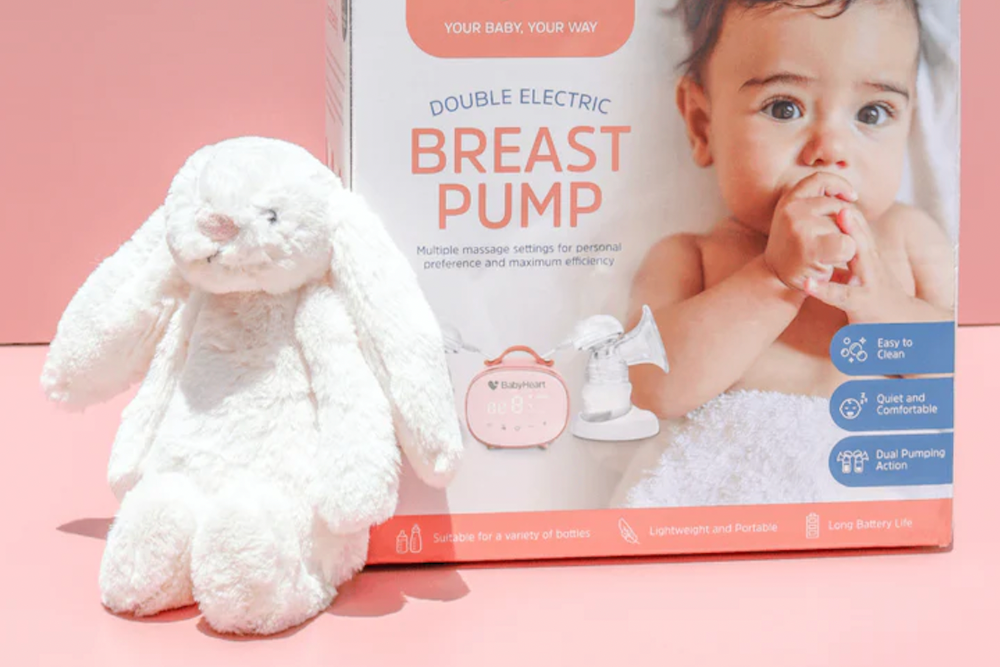
If your baby seems a bit under the weather, it’s a good idea to take their temperature as a starting point.
Just ask any new parent whose child has experienced a fever for the first time and they’ll tell you, it can be a frightening and uncertain experience. Most of the time, a fever won’t harm your baby and it's their body’s natural response to fend off an infection. But sometimes, a fever can be a sign of something more serious.
Taking your baby’s temperature seems simple enough, but it’s natural to have questions. You might be wondering:
- What sort of thermometer should I use to take my baby’s temperature?
- How do I tell if my baby’s temperature is normal?
- How do I know if my baby’s temperature is accurate on my thermometer?
- What’s the best way to take my baby’s temperature?
Today, we’ll discuss how to take your baby’s temperature using the BabyHeart Australia Premium Digital Professional Infrared Thermometer.
Our infrared thermometer is an easy-to-use, non-contact thermometer, and it’s the perfect way to accurately keep track of your baby’s temperature.
What’s an infrared digital thermometer?
Different from traditional temperature thermometers, this temperature sensor collects infrared energy that is emitted by the forehead, rather than internal heat.
This means that there’s no need for direct contact between your baby and the thermometer - perfect for wriggly babies who won’t sit still (especially if they’re wriggling in discomfort when suffering from a fever).
Why should I use an infrared thermometer on my baby?
- They are more accurate than strip-type thermometers (which are held on the baby’s forehead), which only show the temperature of the baby’s skin, not their body.
- They are also more accurate than an electronic ear thermometer, which can be difficult to gain an accurate reading from unless they’re inserted very precisely. Digital thermometers also vary in accuracy, depending on where they’re used - usually either in the rectum, mouth or armpit.
- They are far safer than the old-school mercury in glass thermometers, which have the danger of shattering and leaking mercury, which is poisonous.
How do I take my baby’s temperature using an infrared thermometer?
Firstly, be sure to keep the thermometer in a room temperature environment before use to ensure that you get an accurate reading from your baby.
For newborns, rectal thermometers were previously considered the gold standard, but according to research from Ohio State University in 2019, underarm readings from infrared thermometers are just as precise and even faster, taking just under 2 seconds to get an accurate reading.
The research, which appeared in the 2019 issue of Clinical Pediatrics, found that holding the infrared thermometer to the baby’s underarm area is the best way to get an accurate temperature reading of your baby.
You can also measure your baby’s temperature from their forehead.
Important info:
-
Don’t take your baby’s temperature just after a bath, or if they’ve been wrapped up tightly for a while - if your baby is already warm, this can impact the reading. Ideally, wait 20 minutes before taking their temperature.
-
Once you’ve taken your baby’s temperature, call your doctor right away if:
→ your baby is under 3 months and has a temperature of 38 degrees C or more
→ your baby is under 6 months and has a temperature of 39 degrees C or more
- If you’re unsure about your baby’s temperature or if you’re worried about your baby, always talk to your doctor.
Most babies have an average body temperature of about 36.5°C to 38°C. A fever is when your baby’s body temperature rises above 38°C. The temperature of a baby with a fever may rise above 38°C slowly over a few days, or it might rise very quickly.

When to see a doctor about your baby’s fever
A fever is the body’s response to an infection, which could be a viral infection, such as a cold or a gastro bug, or it could be a bacterial infection, such as some ear and throat infections or pneumonia or meningitis.
If your baby is under 3 months old and has a fever, you should see a doctor immediately, even if they are not showing any other signs of being sick.
If your baby is 3 to 12 months old, a fever might be a sign of illness, so see a doctor for medical advice.
If your baby is over 12 months old, if they have a fever and:
- have trouble breathing
- become drowsy
- don’t want to drink and aren’t urinating enough
- vomit repeatedly or have frequent episodes of diarrhoea
- display signs of a stiff neck, persistent headache or light hurting their eyes
- don’t improve in 48 hours
- are in pain
Then please immediately see a doctor.
Where can I get an infrared thermometer for my baby?
Click here to shop the BabyHeart Australia Digital Professional Infrared Thermometer
Disclaimer: Our product is not a Therapeutic Good or a Medical Device, use it as a Lifestyle Tool
It features:
- No contact measurement, which means no touching the skin
- Handheld design to make the operation more comfortable
- Adjustable temperature units
- Auto-power off within 10 seconds to save power
- Large LCD screen with easy to read temperature values
- A soft pouch to store and protect the thermometer when not in use
Shop here.



